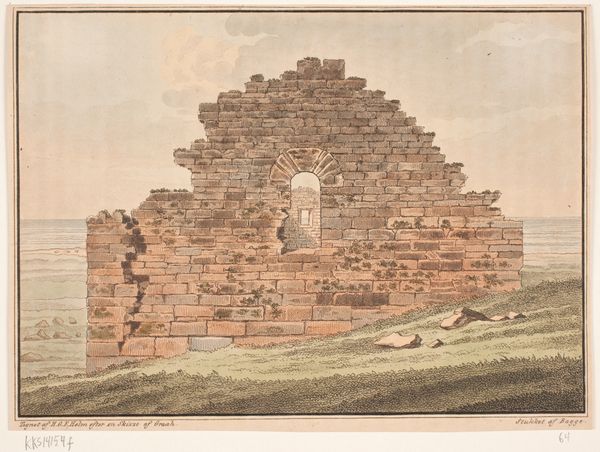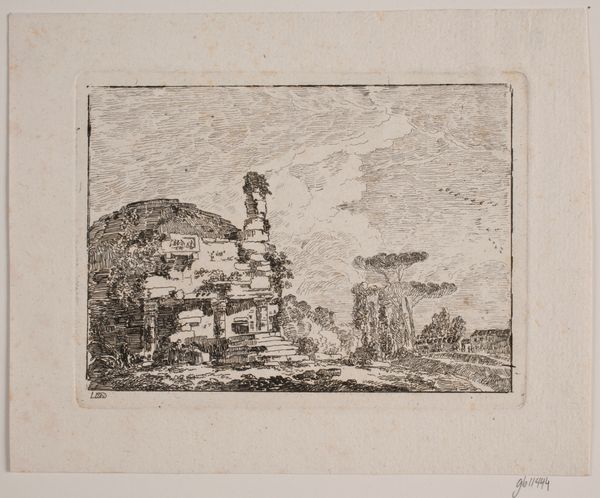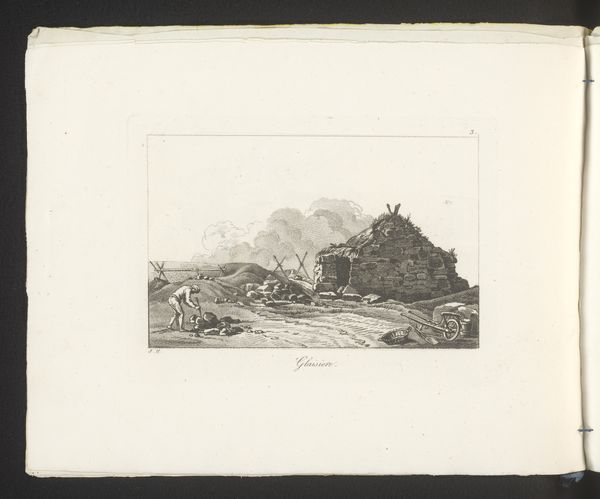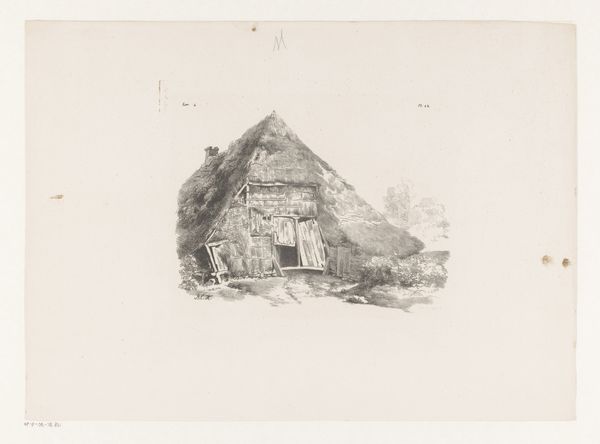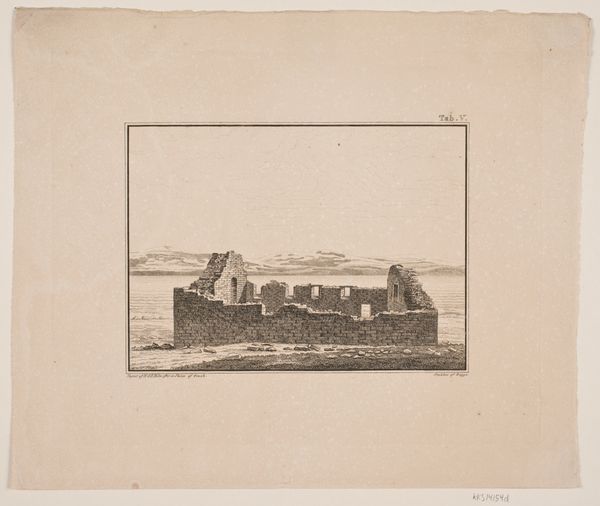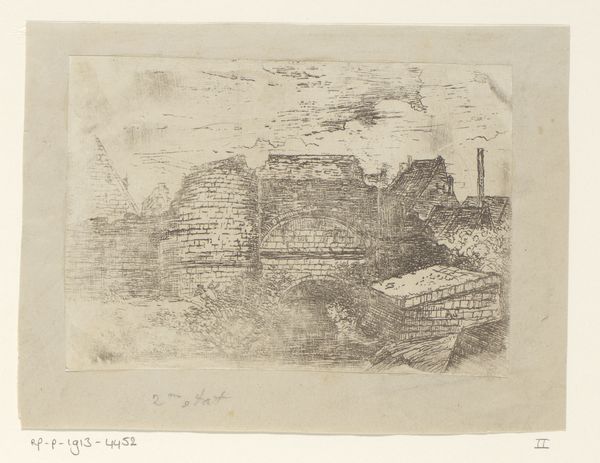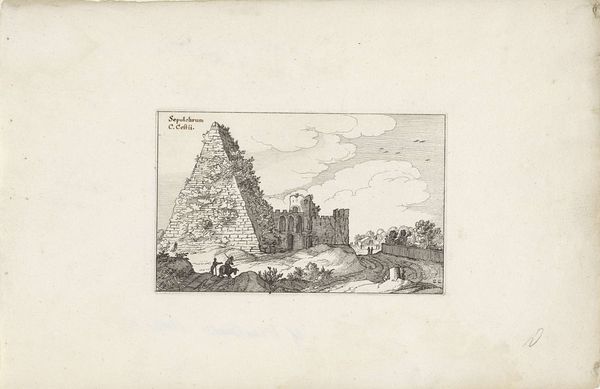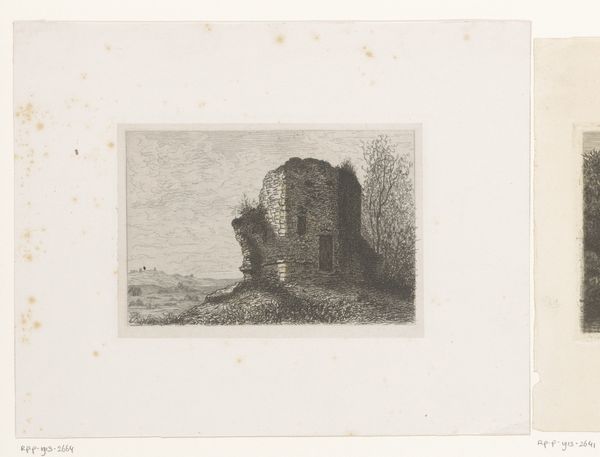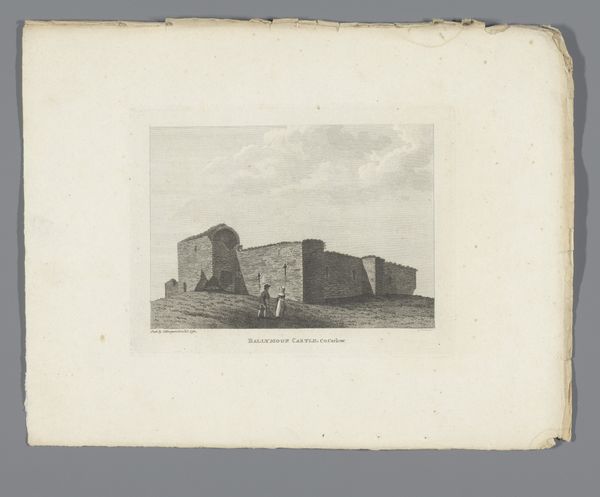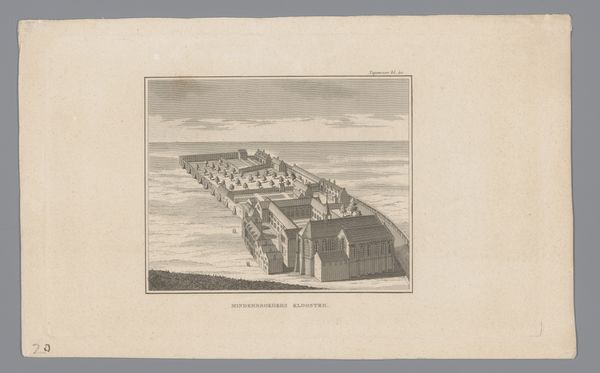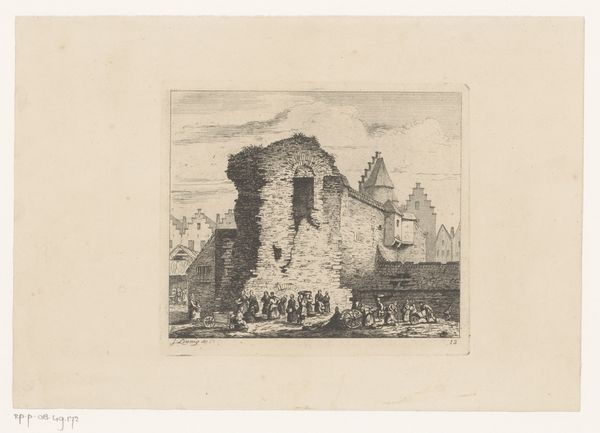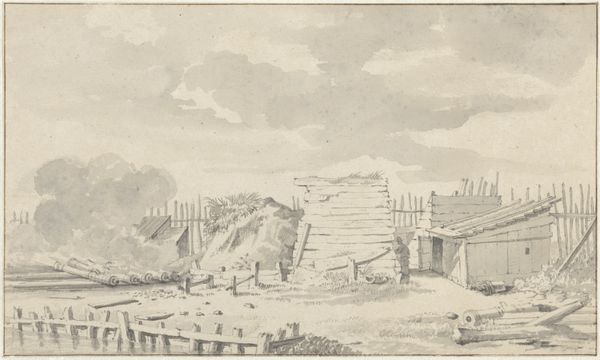
Kirkeruin på Grønland. Illustration til W.A. Graah. Undersøgelsesrejse til østkysten af Grønland 1832
0:00
0:00
print, etching, engraving
# print
#
etching
#
landscape
#
history-painting
#
engraving
Dimensions: 189 mm (height) x 235 mm (width) (plademaal)
Curator: Before us, we have Oluf Olufsen Bagge’s 1832 print, “Kirkeruin på Grønland. Illustration til W.A. Graah. Undersøgelsesrejse til østkysten af Grønland,” housed here at the SMK. The piece employs etching and engraving. What strikes you most immediately? Editor: There’s a distinct somberness—the ruin itself, depicted in precise lines, seems to embody decay. I am intrigued by the texture created through the etching and engraving process. How does the method of its production inform its reception? Curator: Consider the social context: the romantic era, European fascination with exploration. Bagge created this print as an illustration for W.A. Graah's account of his travels to Greenland's east coast. The labor invested in engraving, reproducing the image for wider circulation, becomes part of the artwork's narrative. How might these prints have served as tools for understanding distant lands for contemporary viewers? Editor: I see your point. Beyond the historical implications, let's return to the form itself. Notice the stark contrast between the detailed stone work of the ruins, composed through tight arrangements of etched lines, and the emptiness conveyed by the sea in the background. It isolates the ruins and emphasizes its fragmented existence against the uniformity of open sea. Curator: Indeed. The materiality of the etching – the way the acid bites into the metal, creating lines, and its role in facilitating the mass production and distribution of images – aligns directly with broader processes of information sharing in the 19th century. The very consumption of this image speaks volumes. Editor: Yes, the texture gives an authenticity, lending itself to an archaeological illustration meant for a scientific document. Curator: Precisely, these textural elements elevate the piece. The engraving work contributes, in some way, to document an era of production—where even art was becoming subject to replication. The image becomes a commodity itself, further distancing the viewer from the subject of the original artwork. Editor: This exercise reminds me of the potential that still lies in older works, especially in examining these long forgotten documents, and reconsidering their cultural and artistic value within history. Curator: Yes, thank you! These illustrations and the way they were made provided valuable context. Examining production, circulation and the audience of art helps unlock a richer understanding of these ruins and the stories that are part of their material legacy.
Comments
No comments
Be the first to comment and join the conversation on the ultimate creative platform.
